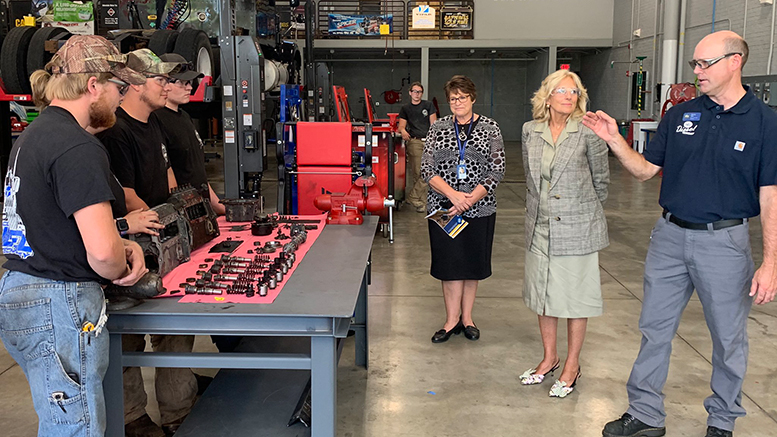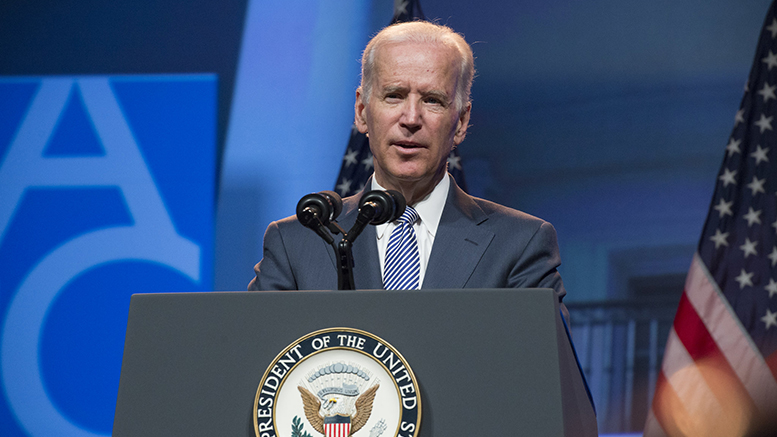Democratic presidential candidate Joe Biden on Tuesday released a higher education plan that focuses heavily on community colleges, from offering students two years at community college tuition-free, to new investments in workforce training and programs to help community college students succeed.
The plan also would double the maximum Pell Grant award (which is currently $6,195) and automatically provide increases to the maximum award based on inflation.
The former vice president’s full plan would cost $750 billion over 10 years and be paid for by tax reform measures on the wealthiest Americans, according to the Biden campaign. It would be a federal-state partnership, with the federal government covering up to 75 percent of the costs and states contributing the remainder.
A pathway to postsecondary education
In his plan, Biden noted that in a globalized and technology-driven economy, a high school education is not enough to earn a middle-class income. Older workers also must become lifelong learners to ensure they have the skills needed in a changing workplace. But for too many Americans, earning a degree or credential remains unaffordable, the Biden campaign said.
“Part of what makes community colleges so extraordinary is that, working with limited resources, they have figured out how to provide a high-quality, cost-effective education to students often juggling additional responsibilities, such as jobs or child care,” according to the Biden campaign. “But as a country, we haven’t invested enough in making sure community colleges can reach all the Americans who could benefit from their programs, or improve their quality and completion rates.”
Biden’s plan comes as a growing number of education advocates want to see government and business and industry invest more in higher education, especially community colleges. Earlier this week, New America and its partners released an analysis of the former $2 billion Trade Adjustment Act Community College and Career Training program, which Congress created in 2010 during the Obama administration. The initiative leveraged consortia — often led by community colleges — to develop regional workforce development partnerships around high-growth, in-demand industries. New America said it’s time for another similar investment in community colleges.
Grants for student success
To improve their students’ success, Biden’s plan also would create a grant program to help community colleges implement evidence-based practices and other innovations to increase student retention and completion. Such reforms could include:
- academic and career advising services
- dual enrollment
- credit articulation agreements
- investing in wages, benefits and professional development to recruit and retain faculty, including teacher residencies
- improvements to remediation programs
The plan also would provide grants to states that work to accelerate students’ attainment of credentials. Provided examples include:
- early college high schools
- dual-enrollment programs
- guided pathways
- a 12-month academic calendar
- better alignment of high school, community college and four-year college courses
- college credits for quality, degree-related on-the-job training
- degree-related paid internships for course credit

Jill Biden (second from right) last month visited North Iowa Area Community College to see its workforce training programs. Biden, who teaches at Northern Virginia Community College, continues to champion community colleges on her husband’s presidential campaign. (Photo courtesy of Dr. Jill Biden via Twitter)
In addition, the Biden campaign said his plan would help students with college expenses beyond tuition and fees. It would give states financial incentives to foster collaboration between community colleges and community-based organizations to provide wraparound support services for students, especially veterans, single parents, low-income students, students of color and students with disabilities. Such services can range from public benefits and additional financial aid to cover textbook and transportation costs, to childcare and mental health services, faculty mentoring, tutoring and peer support groups.
Biden also would create a federal grant program to help community colleges create emergency grant programs for students who face unexpected financial expenses that could prompt them to drop out.
$50B for training, but not for IRAPs
The former vice president also would make a $50 billion investment in workforce training, including community-college business partnerships and apprenticeships — though not so-called industry-recognized apprenticeship programs (IRAPs), at which he jabbed.
“These funds will create and support partnerships between community colleges, businesses, unions, state, local, and tribal governments, universities, and high schools to identify in-demand knowledge and skills in a community and develop or modernize training programs – which could be as short as a few months or as long as two years – that lead to a relevant, high-demand industry-recognized credential,” according to an outline of the plan.
The funds will also “exponentially increase” the number of registered apprenticeships and partner with unions “who oversee some of the best apprenticeship programs throughout our nation, not watering down the quality of the apprenticeship system like President Trump is proposing.”
Finally, the former vice president wants to invest $8 billion in technology and facilities at community colleges.
Easing student debt
On student debt, Biden would cut in half the income percentage caps on student loan repayments. Borrowers currently must pay up to 10 percent of their discretionary income. Biden wants to cap payments at 5 percent of discretionary income, and delay payments for anyone making less than $25,000, with no additional interest for the borrower. His plan would forgive any remaining debt after 20 years of payments.
Biden’s plan on student debt is not as ambitious as those proposed by leading presidential revivals Sens. Bernie Sanders (I-Vermont) and Elizabeth Warren (D-Massachusetts): Sanders wants to eliminate all existing student debt, while Warren would eliminate about 95 percent of it. Both plans would cost more than $1 trillion.
Biden also would revamp the Public Service Loan Forgiveness Program. A new program would offer $10,000 of undergraduate or graduate student debt relief for every year of national or community service, up to five years. It would automatically enroll individuals working in schools, government and other non-profits. Up to five years of prior national or community service also would qualify.

